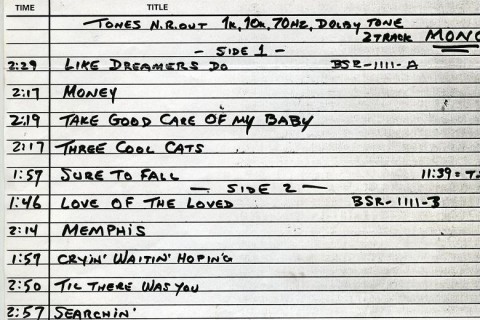At the top of this post, you can watch 1941’s Superman, a short nominated for an Academy Award and (according to 1,000 animation professionals) the 33rd greatest cartoon of all time. When you’ve done that, how about eight more of the Man of Steel’s most aesthetically distinctive, pristinely restored animated adventures? Warner Brothers has just posted them, free for the watching, to their YouTube channel. They originally came out of Fleischer Studios, which animation buffs will know meant a true mark of quality back then. “Then,” in this case, means the early 1940s, and these Fleischer-produced Superman shorts brazenly bear the stylistic mark of that era. But if their rich, clean-lined look bursting with Technicolor strikes our eyes today as vintage, it also has a certain retro timelessness — if that doesn’t sound like too much of a contradiction in terms. No wonder they call this the Golden Age of Animation.
Just below, you’ll find Fleischer’s second Superman short, Mechanical Monsters, in which our hero battles exactly those. After it came Billion Dollar Limited, The Arctic Giant, The Bulleteers, The Magnetic Telecope, Electric Earthquake, Volcano, and Terror On The Midway and more— all within a span of under two years.
After 1942, Paramount handed the Superman contract to Famous Studios, which rose out of Fleischer’s dissolution. Eight additional shorts emerged, none now held in regard nearly as high as any of the Fleischer productions.
Where Fleischer possessed a surfeit of imagination, Famous seemed to suffer a deficit. (Their Second World War-themed Superman debut was titled Japoteurs.) But those first eight have enjoyed a long lifespan, particularly as high-profile influences. The Superman animated television series of the 1990s owes them a debt, as does even that same decade’s Batman series. Fans of Japanese animation will recognize the larcenous robots of Mechanical Monsters in Hayao Miyazaki’s series Lupin III and feature Castle in the Sky, and even the thoroughly irreverent Fox cartoon The Tick paid them homage. So, Hollywood types straining to dream up the next Superman franchise reboot: spend time with these still-entertaining, still-impressive pieces of animation, Hollywood cartoons like nothing Hollywood has put out since.
If you would like to sign up for Open Culture’s free email newsletter, please find it here. Or follow our posts on Threads, Facebook, BlueSky or Mastodon.
If you would like to support the mission of Open Culture, consider making a donation to our site. It’s hard to rely 100% on ads, and your contributions will help us continue providing the best free cultural and educational materials to learners everywhere. You can contribute through PayPal, Patreon, and Venmo (@openculture). Thanks!
via Cartoon Brew
Related content:
The Best Animated Films of All Time, According to Terry Gilliam
When Super Heroes Get Old and Retire to Miami
Free Vintage Cartoons: Bugs Bunny, Betty Boop and More
Colin Marshall hosts and produces Notebook on Cities and Culture. Follow him on Twitter at @colinmarshall.



